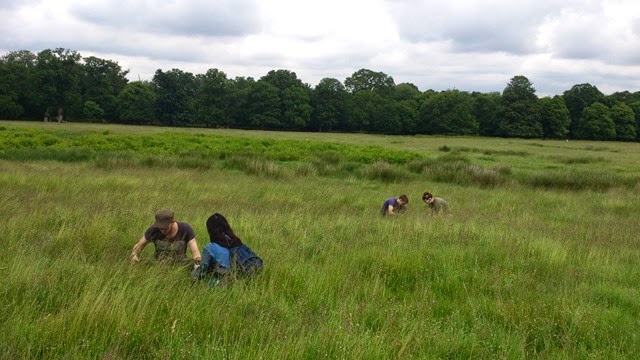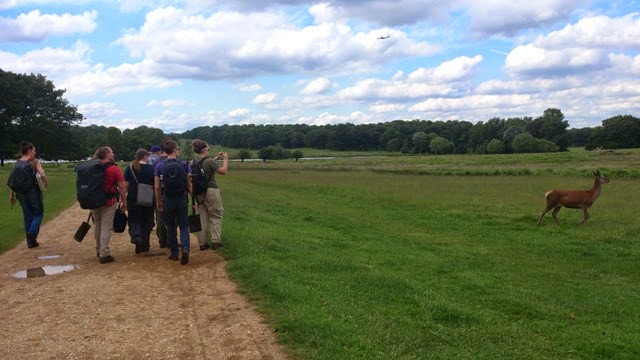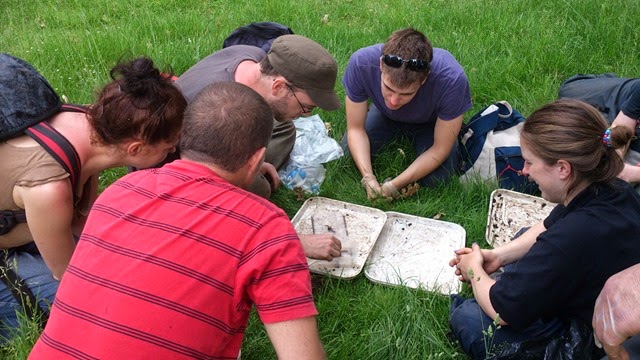Richmond Park is one of the Royal Parks and the largest enclosed space in London, it is a National Nature Reserve, Site of Special Scientific Interest (SSSI) and a European Special Area of Conservation (SAC), because of this the ESB had to obtain special permission and a permit to collect earthworms. It was one of those glorious English Summer days when you can get soaked and sun-burnt in the same day! A group of 10 earthworm fans assembled at Richmond Station, clad in waterproofs before taking a bus to the park – my first ever trip on a London Bus – so that’s another ‘things to do in London’ crossed of my list! I had barely stepped into the Park when I got stuck in grubbing about in a rotten tree, finding the first earthworm off the day – and it was adult, so into a tube it went ready for Sunday, when it turned out to be Eisenia fetida.

Earthworm Society of Britain (ESB) members huddle in the rain around the first earthworm of the day at Richmond Park

Earthworm Society of Britain members survey for earthworms in grassland in Richmond Park
The best areas in terms of numbers were two wet habitats, one a small stream where we dug pits along the bank and took material from the bed itself, and a fen area. The stream produced a very special earthworm indeed: Helodrilus oculatus – an earthworm with very few records, all previously from wet deciduous woodland. This was an earthworm I was particularly keen to find, although I feel I can only half cross it off the ‘earthworm bucket-list’ since I did not see it under the microscope. Wet habitats are unrecorded for earthworms, and can have specialist semi-aquatic species, something I discovered when I targeted seeps in my MSc project and found lots of Eiseniella tetraedra which also turned up in some number in the Richmond Park fen habitat.

The small stream in Richmond Park where Helodrilus oculatus was found

Earthworm Society of Britain members admiring a camera-shy deer in Richmond Park
Towards the end of the day Keiron gave a demonstration of how to relax and straighten earthworms using a plastic storage box. Putting the earthworms straight into a 80% solution of alcohol (industrial methylated spirits or IMS in this case) is a quick way to sample but causes them to twist and curl which can make them more difficult to identify. By first using a 30% alcohol solution to anaesthetise them they can be arranged in the groves of a plastic storage box (or I use drinking straws cut in half lengthwise). This helps make a nice neat reference collection, but I find it takes too much time if a lot of sites are being sampled.
The next Earthworm Society of Britain meeting is planned for the Autumn – why not join in? Membership is only £5 a year and on completion of the workshop you are given a recording pack which includes a copy of the AIDGAP Key to Earthworms.

